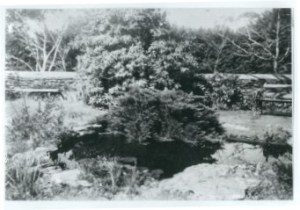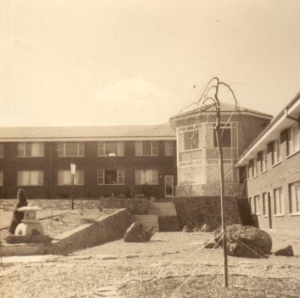We have just completed a major overhaul on a bed of mop head hydrangeas (Hydrangea macrophylla). Garden renovation suits wintertime work, there is time to pay the job full attention. Some plants, such as mop heads, may prefer a summertime pruning as they flower on last season’s growth but they needed major renovation and now seemed right. We started by removing all the dead and old growth from the plants. I did cut back some of the remaining tall stems to give a uniform height but because mop heads flower on old growth generally they need to be left to find their own height. There will be reduced flowers next summer but by the following summer I hope they have grown many new stems and are ready to give a great show. Once the major renovation is complete we will aim to remove dead wood and 1/3 of the older stems every year to maintain both vigour and display.
Oak leaf hydrangeas (Hydrangea quercifolia) and Lace caps (also Hydrangea macrophylla) flower on old growth. H.paniculata and H. arborescens flower on new wood and can be pruned in autumn and winter without reducing the next seasons flowering.
Once the bushes were tidied up we could access the garden bed itself to tackle the undergrowth. Creeping campanula and wild strawberry needed containment, Microlaena stipodes – one of my favourite native grasses but not really helpful here was removed with difficulty, forget-me-nots, dandelions, and the grass weed Erhartia are easy to weed but always leave seeds behind.
There are self-seeded Aquilegias that look good among the hydrangeas so they were dug up and replanted once the bed was clear -a good time to do this as they are close to dormant.
The age of the planting has meant that there has been some losses and the bed looks unevenly planted. We have some more modern white hydrangeas in our nursery removed from another section of the garden so 2 have been planted in to give balance.
Once the bed was clear we applied our in-house compost over the whole bed, fertilised the hydrangeas with Organic Life, and boosted them with worm castings and worm wee. I have planted lollipop primulas and stocks into the front of the bed. The primulas do well on this site but I am not sure about the stocks. The bed has been covered with leaf mulch to retain moisture and inhibit the growth of annual weeds. I have scattered Organic Life over the mulch to limit nitrogen draw down. I will continue to fertilise the annuals with Powerfeed which contains synthetic fertilisers as well as organic nutrients.
After the bed was finished we had our snow day (see earlier post) and I feared that the freeze on the following day would kill the new buds. We were assured by a Scottish visitor that if you have snow before a freeze your hydrangeas will be OK and I think they are!














